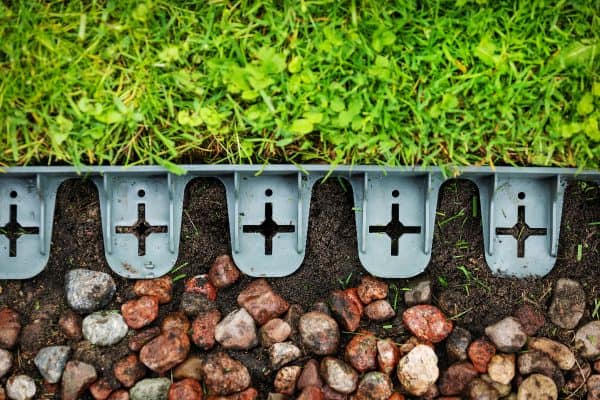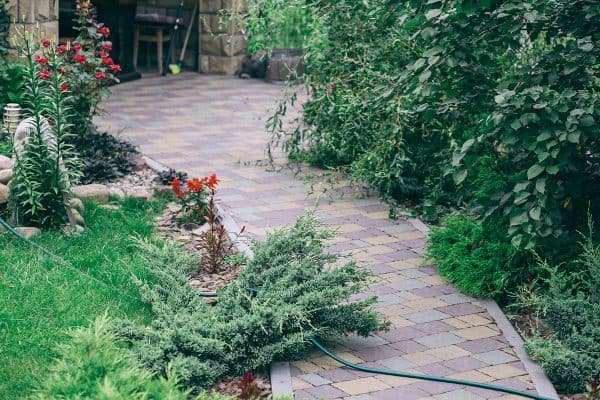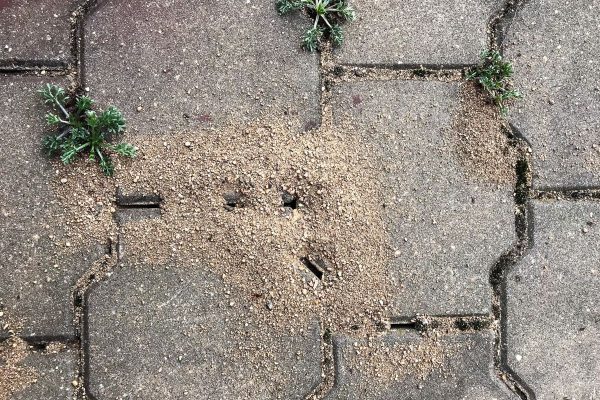Having a nice patio where you can sit and dine in privacy or with family does not only include what furniture or decorations you have around. The pattern on your patio paver is also an important design element of the space.
A patio paver is usually designed to look like curated pieces put together to create a certain pattern. To create this pattern, you will need to consider the type of material and shape of your paver blocks.
Your choice of blocks creates the overall design of the paved area. Natural stone, brick, and concrete are just some of the commonly used materials available.
Maintaining a paver patio can be easy and can last a long time, but you must consider certain factors before building one. Clearing the area of grass or loose dirt and preparing the ground for installation are just some things you can do to prepare.
If you decided to create a circular patio paver and seek inspiration on what pattern you should go for, you have come to the right place.
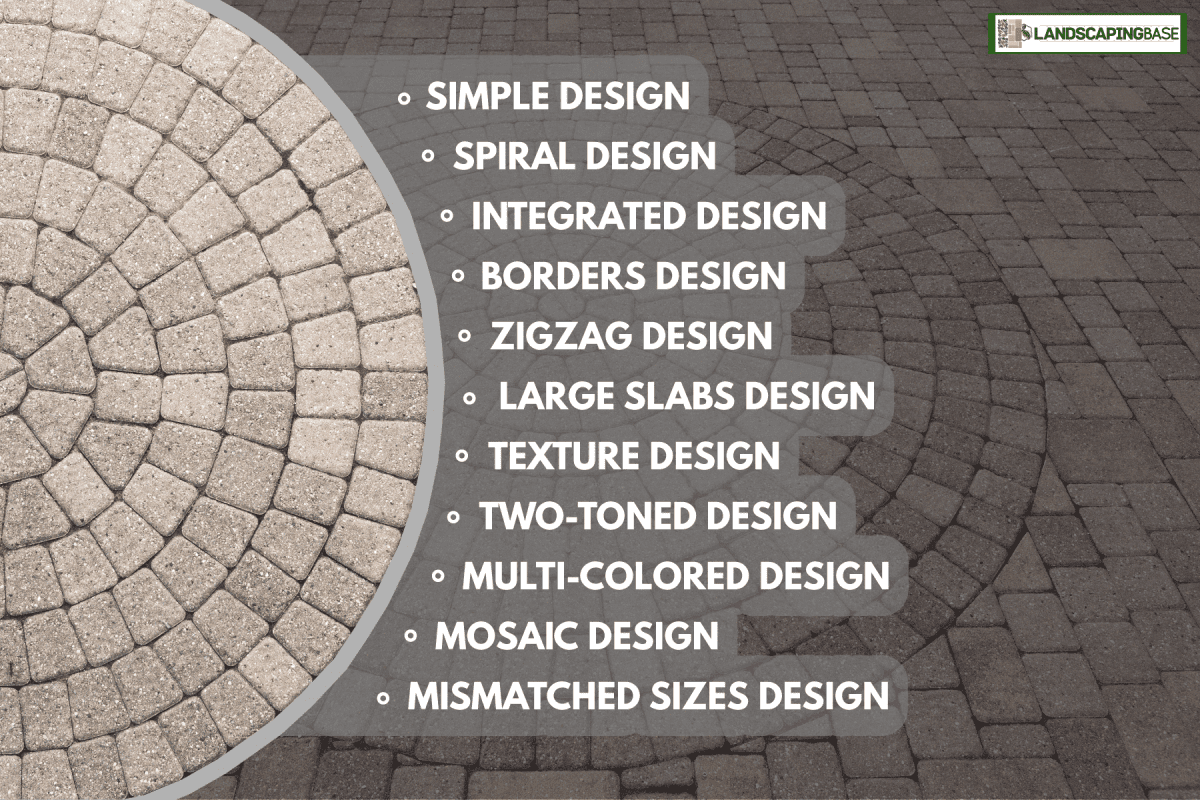
1. Simple
Having plain-faced paver blocks to create your circular patio shape is an easy design. These types of blocks do not need to interlock. But do not let its simplicity fool you; having a plain design for the flooring allows you to maximize the furniture designs placed around the area.
Take a look, for example, at this photo with a neutral color to its paver blocks. Although the patio paver seems simple, it makes the chairs and yellow pillows pop out vibrantly. This way, the flooring gives all the spotlight to the furniture within its area.
2. Spiral
If you want to be more daring with the shapes of your paver blocks, you can choose to mix different shapes together to form a spiral pattern.
Different sizes and shapes may take time to arrange properly to fit the circular design. You will also need to plan on how to install each piece of block. Still, with enough patience, you can achieve a unique design that gives your circular patio paver character.
In this photo, the designer used square and circular shapes of different sizes for the paver blocks. It might seem like there's too much going on, but the way each paver block was arranged makes all the pieces work together. Despite the seemingly clashing shapes, it achieved an interesting spiral design.
3. Integrated Design
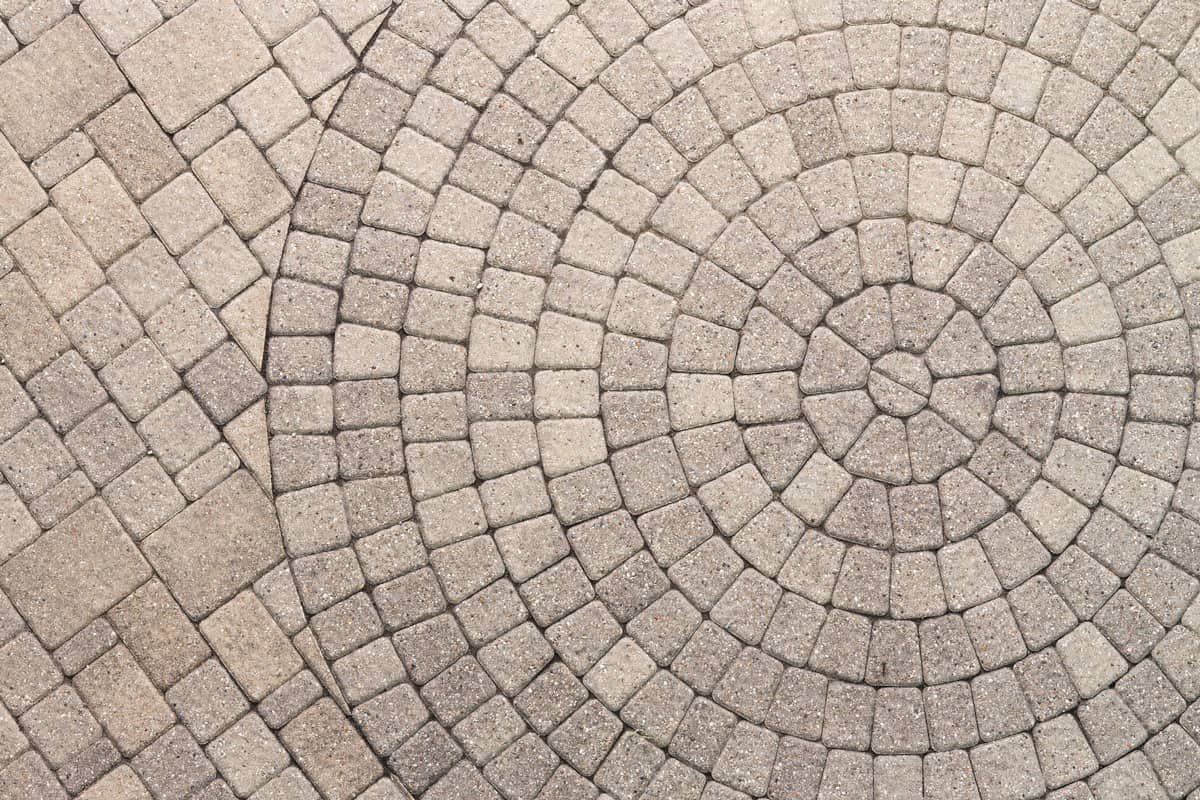
A circular patio paver does not necessarily need to be isolated from the rest of the flooring. You can design your circular patio within another existing design. This way, you can section out a particular area on your patio by designing the section differently from the rest of the flooring.
An example is this photo with its circular patio paver design within an overarching square design. By sectioning a portion of its overall patio paver with a circular design, the homeowner could easily designate this area as a dining space.
4. Borders
Another way to designate an area with patio pavers is to create a circular border. These paver blocks make a solid outline, while the other blocks inside the circle are accentuated.
Here, the designer chose to have four rings worth of black paver blocks to draw the outside portion of the circular patio. Meanwhile, the rest of the paver blocks are in shades of gray and brown to color the rest of the flooring.
5. Zigzag
Paver blocks have different shapes that allow you to fill up the circle in any pattern you want, including a zigzag pattern.
This patio uses long rectangular paver blocks to fill in and create a pattern for the circular design of the floor. The zigzag effect gives the space a distinct character and overall look from the rest of the area.
6. Large Slabs
You can also choose to have large slabs of paver blocks to create your circular patio. This also means that you will use fewer paver blocks for your surface.
The designer used black slabs for this patio to create a circular space. Although the blocks look simple, it also gives the area a level of sophistication. The simple pebbles around the black slabs also highlight the surface, making it look sleek and modern.
7. Texture
If you want a simple design but still add flair, you can choose to have paver blocks with different textures. Even if you go with blocks with plain faces and do not necessarily interlock, having a different surface can make it more dynamic. It adds a visual element to the surface.
The designer for this circular patio paver went for a design that mainly uses simple smooth blocks. To accentuate the patio flooring, they added paver blocks of the same kind with a rough texture and placed them in between the overall design of the circular patio.
8. Two-toned
Apart from offering different shapes and sizes, patio pavers are made in different colors. You can choose a two-tone pattern to give a more distinctive design to the flooring.
The circular patio in this photo has two rings in the flooring with black paver blocks while everything else is colored light gray. It might look like dull coloring, but the colors complement and highlight one another on the surface giving it a unique yet subtle design.
9. Multi-colored
You can also choose a patio with multiple colors to give it an eccentric look. Take note that the colors should play well with each other. You will also need to arrange the colors strategically so they will not look random.
For example, this circular patio paver has four colors: white, gray, black, and brown. The color arrangement gives this patio a modern look.
10. Mosaic
As mentioned, since paver blocks come in different sizes, shapes, and colors, forming a mosaic within your circular patio surface is possible. You will have to plan what you want to put as a mosaic and figure out the cut of your paver blocks to create your specific design.
In this photo, the designer wanted to put a bunch of red grapes as the mosaic for this circular patio paver. Apart from figuring out the color of the paver blocks for the vines, leaves, stems, and red grapes, the designer also had to choose what color should be the background of the mosaic for it to stand out.
11. Mismatched Sizes
Patio blocks can be treated like puzzle pieces that you can fit into a particular shape. The availability of multiple shapes for patio blocks allows you to create a circular design even with mismatched blocks.
For the design in the photo, the circular patio has odd-shaped paver blocks. Despite the mismatched cut for each slab, it still works in unison since the blocks are cut specifically to create a circular design.
Check out this patio paver mold available on Amazon.
Final Thoughts
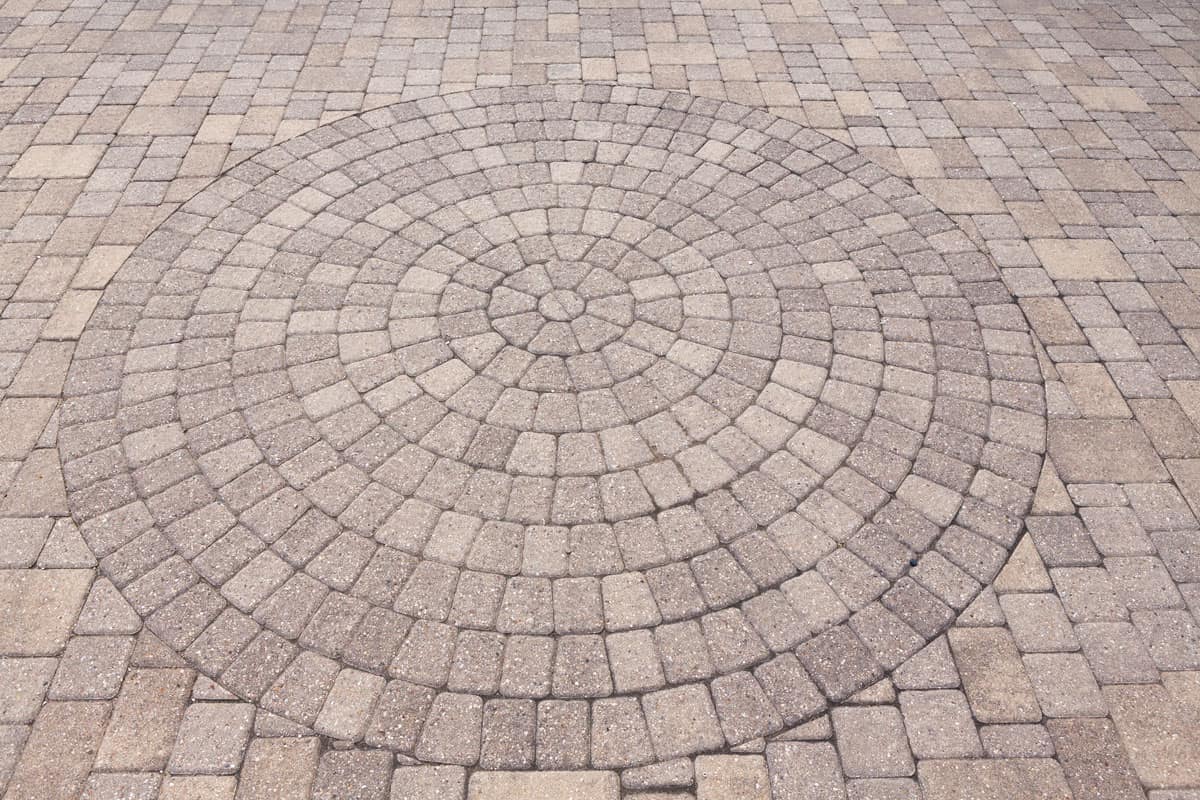
A circular patio paver is a great type of flooring to hold any gathering with friends or family within your home. To make your space more presentable, there are many ways to spruce up your circular patio paver through different designs or color schemes.
If you thought this article was inspirational, you could also check out these other articles:


